Hey there! If you’ve ever been caught off‑guard by a sudden, itchy rash after a dip in a chilly lake or a brisk wind, you’re not alone. Cold urticaria—sometimes called “cold hives”—can feel confusing and a little scary, especially when it shows up at the most inconvenient moments. The good news? With the right knowledge, a few simple habits, and the proper cold urticaria treatment, you can keep those unwelcome welts under control and still enjoy the cooler seasons you love.
Understanding Cold Urticaria
What exactly is cold urticaria?
Cold urticaria is a type of physical allergy where exposure to low temperatures triggers your skin’s mast cells to release histamine and other inflammatory mediators. The result? Pruritic (itchy) wheals, swelling, and sometimes even a burning sensation. Unlike ordinary hives that appear for unknown reasons, these “cold hives” have a clear trigger: the chill.
Key facts at a glance
- ICD‑10 code: L50.2
- Usually starts in young adulthood, but children and older adults can be affected.
- In about 0.05 % of the population, it’s considered a rare condition.
- Often idiopathic (no identifiable cause), though infections, blood disorders, or certain medications can act as secondary triggers.
Recognizing Cold Hives Symptoms
How do the hives look and feel?
Typical cold hives symptoms appear within minutes of exposure and may include:
- Raised, red or pink welts that are intensely itchy.
- Localized swelling (angioedema), especially around the lips or eyes.
- A fleeting burning or stinging sensation before the rash settles.
- In severe cases, generalized hives, dizziness, or difficulty breathing.
Most often, the rash fades within 30 minutes to a few hours once you warm up the skin again.
Common Cold Urticaria Triggers
Which chilly encounters should set off your alarm?
Cold isn’t just “air conditioning” – it’s every way temperature can dip around you:
- Cold water (swimming, showering, washing dishes).
- Wind‑chill outdoors, especially after a sudden temperature drop.
- Contact with icy objects: metal railings, frozen food containers, snow.
- Rapid temperature changes: moving from a heated room to a cold car.
Even a seemingly harmless cold drink can be a trigger if it stays in contact with your skin for a while.
Diagnosis Steps
How do doctors confirm it?
The classic “ice‑cube test” is quick, safe, and surprisingly accurate. An ice cube is placed on the forearm for five minutes, then removed. If a wheal forms within a few minutes, the test is positive.
According to the Mayo Clinic, the test should be performed under medical supervision because the cold exposure could theoretically provoke a systemic reaction in highly sensitive individuals.
When are extra labs needed?
If a doctor suspects an underlying condition—like a blood disorder or infection—they may order a CBC, thyroid panel, or viral serology. This helps rule out secondary cold urticaria cause factors that need separate treatment.
Treatment Options
Over‑the‑counter antihistamines
For many, the first line of cold urticaria treatment is a non‑drowsy H1 antihistamine taken before anticipated exposure. The goal is to block histamine receptors so the skin doesn’t overreact.
Best OTC choices
- Loratadine (Claritin, Alavert)
- Cetirizine (Zyrtec, Zerviate)
- Desloratadine (Clarinex)
Take the pill about 30 minutes before you know you’ll be in the cold. If you’re planning a winter hike, a dose beforehand can dramatically reduce the chance of a flare.
Prescription medicines
When OTC antihistamines aren’t enough, doctors have several proven options.
Omalizumab (Xolair)
A monoclonal antibody originally used for asthma, omalizumab can calm an over‑active immune response. It’s usually reserved for patients who don’t respond to high‑dose antihistamines.
Cyproheptadine
One older study showed that cyproheptadine effectively blocked symptoms by acting as an H1 receptor antagonist. A study found patients were symptom‑free while on the medication, though the primary effect was receptor blockade rather than reduced histamine release.
Cinnarizine
High‑dose cinnarizine (25 mg three times daily) was examined in a 14‑patient trial. About 57 % achieved complete remission, and another 14 % had a good response. Side‑effects were mild, with occasional vertigo reported. According to the study, cinnarizine can be a useful alternative for those intolerant of standard antihistamines.
Ebastine
In 2007, researchers demonstrated that ebastine safely prevented hives in a controlled setting. It’s another second‑generation antihistamine that may be tried when others fall short. A study highlighted its effectiveness without significant sedation.
Summary of response rates
| Treatment | Study | Response Rate |
|---|---|---|
| Non‑drowsy antihistamines (loratadine, cetirizine, desloratadine) | Mayo Clinic clinical experience | ~70 % partial relief |
| Omalizumab | Multiple case series (2020‑2023) | ~80 % significant improvement |
| Cyproheptadine | Sigler et al., 1980 | Complete symptom control in 100 % of studied patients |
| Cinnarizine | Tosoni et al., 2003 | 71 % (complete + good) response |
| Ebastine | Magerl & Schmolke, 2007 | Effective prevention in the majority of participants |
Non‑pharmacologic strategies
Medicine works best when you pair it with sensible lifestyle tweaks.
Pre‑exposure planning
- Take your chosen antihistamine 30‑60 minutes before you know you’ll be cold.
- Dress in layers, using moisture‑wicking fabrics to keep skin dry.
- Carry a small “cold‑safety kit”: a pocket‑size antihistamine, an epinephrine auto‑injector (if prescribed), and a warm blanket.
During a flare
- Warm the affected area gradually—don’t apply hot water directly, as sudden heat can worsen itching.
- Use gentle, fragrance‑free moisturizers to soothe the skin.
- A short‑acting antihistamine (e.g., diphenhydramine) can help if the reaction is intense, but remember it may cause drowsiness.
Special situations
If you’ve tried several antihistamines with little relief, consider a step‑wise approach:
- Switch to another non‑sedating antihistamine or increase the dose under doctor supervision.
- Add an H2 blocker (ranitidine or famotidine) or a leukotriene antagonist (montelukast).
- Discuss biologic therapy such as omalizumab.
- In rare, refractory cases, a short trial of systemic steroids may be warranted—but only under specialist guidance.
Prevention Tips (Cold Urticaria Prevention)
Everyday habits that raise your “cold threshold”
- Stay hydrated: Well‑hydrated skin is less reactive.
- Avoid rapid temperature swings: When moving from a heated indoor space to the outdoors, pause in a vestibule if possible.
- Protect exposed skin: Gloves, scarves, and waterproof shoes are your best friends.
- Limit alcohol and hot drinks before cold exposure: They can dilate blood vessels, making your skin more sensitive.
Travel checklist for cold climates
- Layered clothing with a wind‑proof outer shell.
- Water‑proof, insulated gloves and socks.
- Portable antihistamine tablets.
- Paper or plastic wrap for any metal objects (e.g., bike handlebars) you might touch.
When to Seek Emergency Help
Red‑flag symptoms that need immediate attention
If you notice any of the following, call emergency services right away:
- Difficulty breathing, wheezing, or a tight throat.
- Swelling of the lips, tongue, or face that spreads quickly.
- Dizziness, faintness, or a rapid pulse.
- Widespread hives covering large body areas.
These signs may indicate anaphylaxis, a life‑threatening reaction. If you’ve been prescribed an epinephrine auto‑injector, use it immediately and seek medical care.
How to use an epinephrine auto‑injector correctly
- Remove the safety cap.
- Press the tip against the outer thigh (through clothing if needed).
- Hold firm for 3 seconds, then remove.
- Call 911 even if you feel better.
Training videos from reputable organizations, such as the American College of Allergy, can reinforce proper technique.
Expert Insights & Real‑World Stories
Case Study #1 – The Snowboarder’s Dilemma
Mark, 28, loved back‑country snowboarding but began noticing red, itchy patches after each run. After an emergency visit for a severe flare, his allergist performed the ice‑cube test (positive) and started him on cetirizine 10 mg an hour before hitting the slopes. Within two weeks, Mark reported a 90 % reduction in hives and could finally enjoy his winter hobby again. He also added a waterproof glove liner, which cut down incidental hand exposure.
Allergist’s Quick Tip
Dr. Elena Ruiz, board‑certified allergist, recommends “keeping a simple diary for a month.” Note the temperature, activity, and any meds taken. “Patterns emerge quickly,” she says, “and they help both you and your doctor tailor the treatment plan.”
Data Snapshot from a Systematic Review
A 2019 systematic review of cold urticaria interventions (PubMed ID 30776418) concluded that non‑sedating antihistamines remain first‑line, while biologics and cinnarizine showed promise for refractory cases. The authors emphasized the need for individualized treatment pathways based on severity and patient preference.
Trusted Resources (Authoritativeness)
- Mayo Clinic – Diagnosis & Treatment
- UpToDate overview of cold urticaria (2025 edition) – offers evidence‑based management algorithms.
- American Academy of Allergy, Asthma & Immunology (AAAAI) patient education pages.
- Urticaria Canada – community support and up‑to‑date research links.
Conclusion
Living with cold urticaria doesn’t have to mean living in fear of every chilly breeze. By understanding the cold urticaria cause, recognizing the typical cold hives symptoms, and employing a combination of proven cold urticaria treatment options and smart prevention habits, you can regain control of your day‑to‑day life. Remember, the best plan is a partnership between you, your healthcare provider, and the knowledge you gather here. Have you tried any of these strategies? What worked (or didn’t) for you? Share your story in the comments – we’re all in this together, and your experience might just be the tip another reader needs.





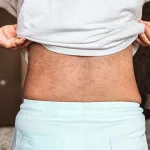
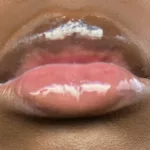

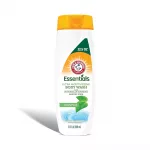


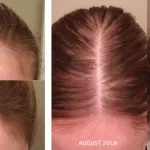

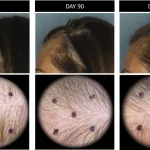
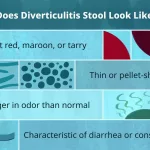
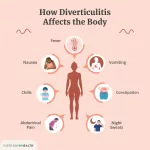
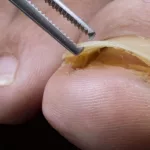
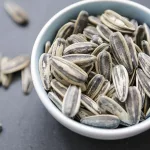
Leave a Reply
You must be logged in to post a comment.